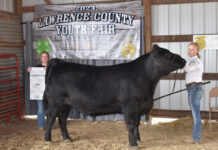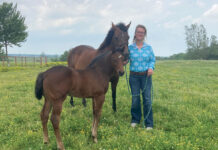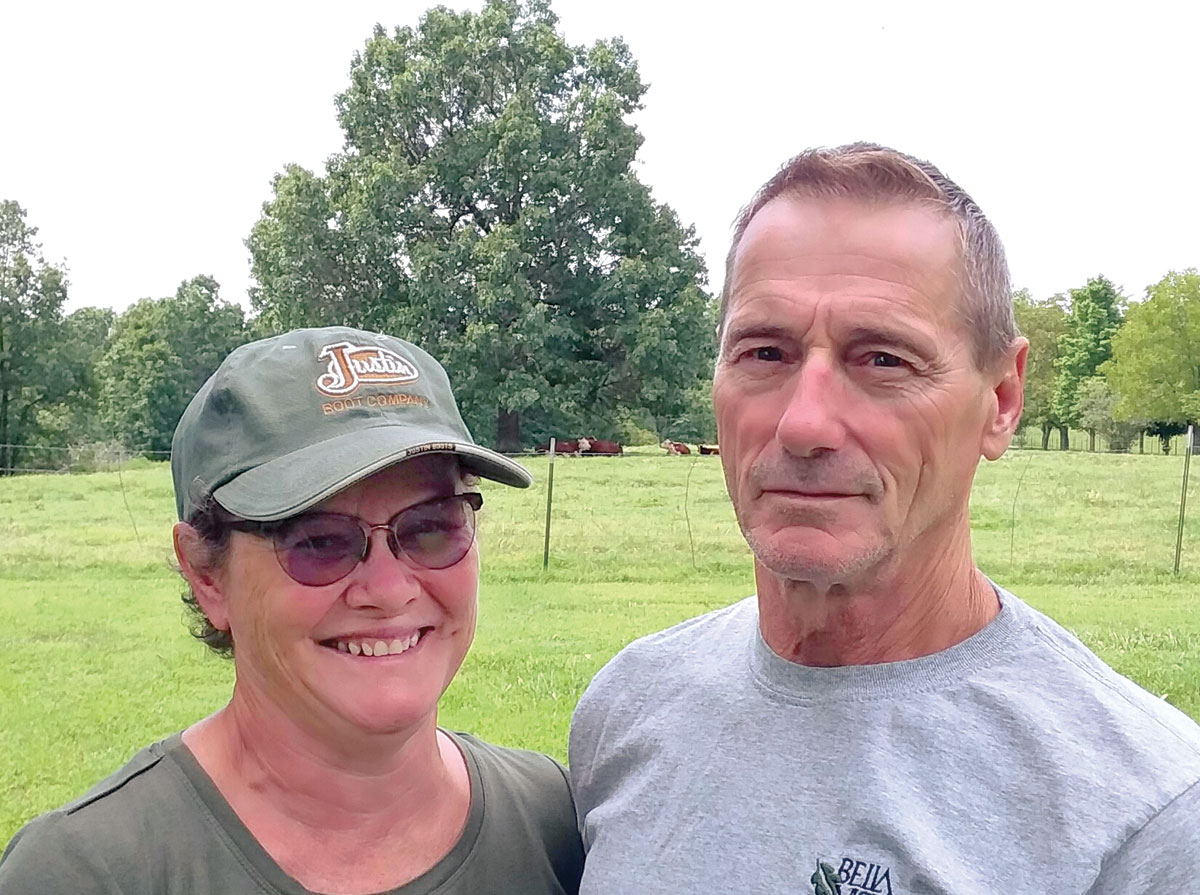
Steve Stewart runs cattle on his dad’s farm in Christian County near Spokane, Mo. His dad had cattle as long as Steve could remember. Steve said, “I think I bought my first ones in 2002. The first ones I bought were Gelbvieh and then I started looking at the Balancers and the hybrid vigor. So I bought an Angus bull and put it with the Gelbviehs.”
Steve said, “We moved off the farm and had to sell the goats.” He kept his cattle somewhere else. His dad hadn’t had cattle in years, so the farm was “really grown up.”
He wanted something that would eat brush like a goat and became interested in Scottish Highland cattle. He bought six head of them. Rather than buying a Highland bull for those six, Steve decided to use his Angus bull on them.
He stated, “We penned them up in dad’s lot and in about two weeks they had it ate down to where it looked like somebody lived here again. I thought that was pretty good.”
Their first calves were half Angus and Steve said, “They didn’t have any problems calving. The calves were short and stocky, more like the old Angus, and just a real compact animal.”
An older man that Steve had partnered with on some commercial cattle told him that he made a lot more money off of small cattle than he ever had big cattle. Steve said his words were, “Think about what it costs to keep a large frame animal in good shape.”
Steve filed that away in the back of his mind, and said, “That’s what I got to seeing in the Highland and Highland/Angus crosses.”
Scientists aren’t the only ones who experiment. Farmers have their own methods of testing to see what works. Steve said, “I had a herd of about 25 Highland/Angus on one side of my grandpa’s farm and on the other side I had a herd of about 25 Angus and Gelbvieh and their crosses. That winter I noticed that I was feeding two to three bales to the Angus/Gelbvieh crosses and I was feeding one bale to the Highlands and their crosses.”
Steve commented, “Grandpa always used to say, ‘It’s not what you make; it’s what you save.’ I thought that was a good example right there.”
That year didn’t prove to be a good one and he needed to sell some cattle. He chose to sell the Angus/Gelbvieh herd.
It seems many cattlemen still don’t understand the Scottish Highland breed. Steve explained, “It’s fun to laugh at them, but people can’t get past the making fun of them to look at what they can really do. This is sort of why I did my test deal.”
Steve believes that “crossbreeding is where the Highland people are missing a market. For first calf heifers, you can put a Highland bull on them and their first calf will be small. You don’t have to worry so much about when the bull gets in to them.” He added, “I’ve always been able to get more out of a small ‘live’ calf than a big ‘dead’ calf.”
He has never weighed one of his calves, but estimates the birth weight to be around 40 pounds. Steve said, “45 pounds on a crossbred. They’ll be a little bit bigger, but not much.”
His calves are about six months old when he sells them, and weigh around 400 to 450 pounds. He mainly sells live animals off the farm, but said, “A lot of people who raise Highlands sell the beef to health food stores.” He uses the Internet to sell his cattle. Many are sold to people who have small tracts of land and want to run some animals on it. Steve stated, “They work well for that.”
The greatest benefit of using a Highland bull with commercial cattle is economics. Steve explained, “They don’t eat as much. Crossing them, they grow better than the Highlands and are just an economical breed to raise. You have a lot less input cost to them. That’s what I like about them.”
Although he has sold all his Angus, Steve said he was very pleased with the Highland/Angus cross.
He stated, “Where I think Highlands would be best is for somebody who wanted an economical herd of momma cows and put them with an Angus bull. You’re going to have black calves. When I crossed Highlands to the Angus it didn’t matter what color the mothers were, the calves came out black. Right now it seems like anything that’s black brings more money.” He added, ‘You don’t have a horn problem with them. They’re a little more wooly than a regular Angus, but not to the point that it affects anything that much.”







